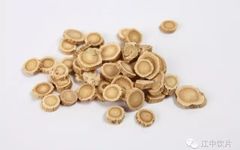Astragalus (Huang Qi) is the dried root of the leguminous plant Astragalus membranaceus (Fisch.) Bge. var. mongholicus (Bge.) Hsiao or Astragalus membranaceus (Fisch.) Bge. Harvested in spring and autumn, the roots are cleaned of fibrous roots and root tips, then dried. 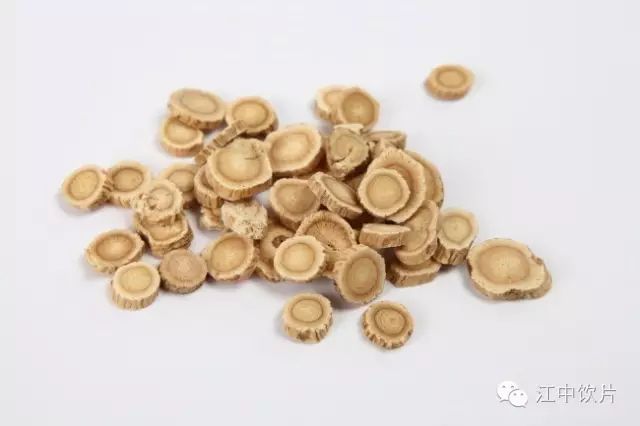 【Aliases】: Mian Qi, Huang Qi, Du Shen, Shu Zhi, Bai Ben, Bai Yao Mian, Huang Shen, Xue Shen, Ren Xian, etc. 【Description】: Astragalus, also known as Mian Qi, is a perennial herb that grows 50-100 cm tall. The main root is thick, woody, often branched, and grayish-white. The stem is erect, with many branches in the upper part, featuring fine ridges and covered with white soft hairs. It is found in Inner Mongolia, Shanxi, Gansu, Heilongjiang, and other regions.
【Aliases】: Mian Qi, Huang Qi, Du Shen, Shu Zhi, Bai Ben, Bai Yao Mian, Huang Shen, Xue Shen, Ren Xian, etc. 【Description】: Astragalus, also known as Mian Qi, is a perennial herb that grows 50-100 cm tall. The main root is thick, woody, often branched, and grayish-white. The stem is erect, with many branches in the upper part, featuring fine ridges and covered with white soft hairs. It is found in Inner Mongolia, Shanxi, Gansu, Heilongjiang, and other regions. 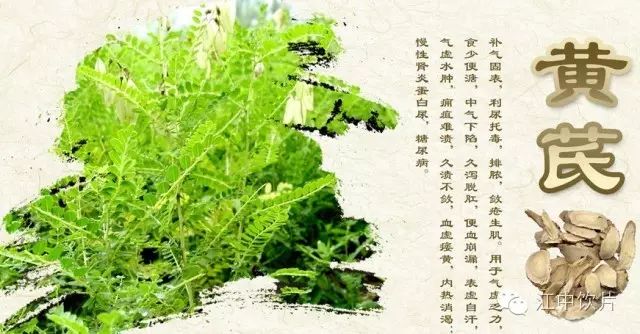 【Characteristics】: The product is cylindrical, sometimes branched, with a thicker upper end, measuring 30-90 cm in length and 1-3.5 cm in diameter. The surface is light brown or light brownish-yellow, with irregular longitudinal wrinkles or grooves. It is hard and tough, not easily broken, with a fibrous and powdery fracture surface. The bark is yellowish-white, and the wood part is light yellow, with radial textures and cracks. The center of old roots may occasionally appear decayed, blackish-brown, or hollow. It has a faint aroma and a slightly sweet taste, with a slight bean-like flavor when chewed. 【Distribution】: Grows in Northeast China, North China, and Northwest China. It thrives at the edges of forests, in shrubs, or under sparse forests, and is also found in hillside grasslands or meadows. It is widely cultivated across China and is one of the commonly used Chinese medicinal materials. It is also distributed in the former Soviet Union. 【Identification】: (1) Cross-section: The cork cells are arranged in multiple rows. The inner layer of the cork consists of 3-5 rows of thick-walled cells. The rays of the phloem are often curved and have cracks; fibers are bundled, with thick walls, lignified or slightly lignified, interspersed with sieve tube groups; stone cells may sometimes be seen near the inner cork layer. The cambium forms a ring. The xylem vessels are scattered singly or in groups of 2-3; there are wood fibers between the vessels; sometimes single or groups of 2-4 stone cells can be seen in the rays. Parenchyma cells contain starch granules. The powder is yellowish-white. Fibers are bundled or scattered, with diameters of 8-30 μm, thick walls, and surfaces with longitudinal cracks. The primary wall often separates from the secondary wall, and the ends often break into hair-like structures or are cut flat. The vessels have simple perforation plates that are colorless or orange-yellow, with closely arranged perforation plates. Stone cells are rare, round, oval, or irregularly shaped, with thick walls. (2) Take 3 g of the powdered product, add 20 ml of methanol, and heat under reflux for 1 hour. Filter, and add the filtrate to a neutral alumina column (100-120 mesh, 5 g, inner diameter 10-15 mm). Wash with 100 ml of 40% methanol, collect the eluent, evaporate to dryness, dissolve the residue in 30 ml of water, and extract twice with water-saturated n-butanol, 20 ml each time, combining the n-butanol solutions; wash with water twice, 20 ml each time; discard the water, evaporate the n-butanol solution to dryness, and dissolve the residue in 0.5 ml of methanol as the test solution. Additionally, take the Astragaloside reference standard, prepare a solution containing 1 mg per 1 ml in methanol as the reference solution. Perform thin-layer chromatography (Appendix VI B) by spotting 2 μl of each solution on the same silica gel G plate, using the lower layer of chloroform-methanol-water (13:7:2) as the developing agent. After development, dry, spray with 10% ethanol sulfuric acid solution, and heat at 105°C until the spots are clearly visible. In the test solution’s chromatogram, corresponding to the reference solution’s chromatogram, brown spots appear under sunlight, and the same orange-yellow fluorescent spots appear under ultraviolet light (365 nm).
【Characteristics】: The product is cylindrical, sometimes branched, with a thicker upper end, measuring 30-90 cm in length and 1-3.5 cm in diameter. The surface is light brown or light brownish-yellow, with irregular longitudinal wrinkles or grooves. It is hard and tough, not easily broken, with a fibrous and powdery fracture surface. The bark is yellowish-white, and the wood part is light yellow, with radial textures and cracks. The center of old roots may occasionally appear decayed, blackish-brown, or hollow. It has a faint aroma and a slightly sweet taste, with a slight bean-like flavor when chewed. 【Distribution】: Grows in Northeast China, North China, and Northwest China. It thrives at the edges of forests, in shrubs, or under sparse forests, and is also found in hillside grasslands or meadows. It is widely cultivated across China and is one of the commonly used Chinese medicinal materials. It is also distributed in the former Soviet Union. 【Identification】: (1) Cross-section: The cork cells are arranged in multiple rows. The inner layer of the cork consists of 3-5 rows of thick-walled cells. The rays of the phloem are often curved and have cracks; fibers are bundled, with thick walls, lignified or slightly lignified, interspersed with sieve tube groups; stone cells may sometimes be seen near the inner cork layer. The cambium forms a ring. The xylem vessels are scattered singly or in groups of 2-3; there are wood fibers between the vessels; sometimes single or groups of 2-4 stone cells can be seen in the rays. Parenchyma cells contain starch granules. The powder is yellowish-white. Fibers are bundled or scattered, with diameters of 8-30 μm, thick walls, and surfaces with longitudinal cracks. The primary wall often separates from the secondary wall, and the ends often break into hair-like structures or are cut flat. The vessels have simple perforation plates that are colorless or orange-yellow, with closely arranged perforation plates. Stone cells are rare, round, oval, or irregularly shaped, with thick walls. (2) Take 3 g of the powdered product, add 20 ml of methanol, and heat under reflux for 1 hour. Filter, and add the filtrate to a neutral alumina column (100-120 mesh, 5 g, inner diameter 10-15 mm). Wash with 100 ml of 40% methanol, collect the eluent, evaporate to dryness, dissolve the residue in 30 ml of water, and extract twice with water-saturated n-butanol, 20 ml each time, combining the n-butanol solutions; wash with water twice, 20 ml each time; discard the water, evaporate the n-butanol solution to dryness, and dissolve the residue in 0.5 ml of methanol as the test solution. Additionally, take the Astragaloside reference standard, prepare a solution containing 1 mg per 1 ml in methanol as the reference solution. Perform thin-layer chromatography (Appendix VI B) by spotting 2 μl of each solution on the same silica gel G plate, using the lower layer of chloroform-methanol-water (13:7:2) as the developing agent. After development, dry, spray with 10% ethanol sulfuric acid solution, and heat at 105°C until the spots are clearly visible. In the test solution’s chromatogram, corresponding to the reference solution’s chromatogram, brown spots appear under sunlight, and the same orange-yellow fluorescent spots appear under ultraviolet light (365 nm). 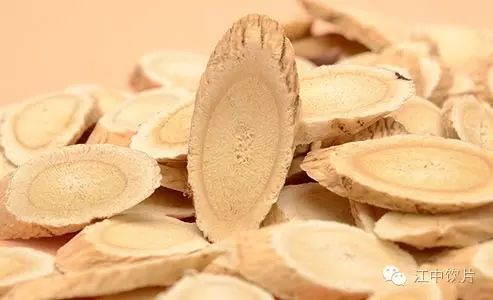 【Properties】: Sweet, slightly warm.Enters the Lung, Spleen, Liver, and Kidney meridians.【Functions and Indications】: Tonifies Qi and stabilizes the exterior, promotes diuresis and detoxification, expels pus, and promotes wound healing. Used for Qi deficiency, fatigue, poor appetite, loose stools, prolapse of the middle Qi, chronic diarrhea, rectal prolapse, blood in stools, metrorrhagia, spontaneous sweating due to deficiency, Qi deficiency with edema, difficult-to-heal carbuncles, chronic non-healing ulcers, blood deficiency with atrophy and yellowing, internal heat with thirst; chronic nephritis with proteinuria, diabetes. 【Dosage】: 9-30 g.
【Properties】: Sweet, slightly warm.Enters the Lung, Spleen, Liver, and Kidney meridians.【Functions and Indications】: Tonifies Qi and stabilizes the exterior, promotes diuresis and detoxification, expels pus, and promotes wound healing. Used for Qi deficiency, fatigue, poor appetite, loose stools, prolapse of the middle Qi, chronic diarrhea, rectal prolapse, blood in stools, metrorrhagia, spontaneous sweating due to deficiency, Qi deficiency with edema, difficult-to-heal carbuncles, chronic non-healing ulcers, blood deficiency with atrophy and yellowing, internal heat with thirst; chronic nephritis with proteinuria, diabetes. 【Dosage】: 9-30 g. 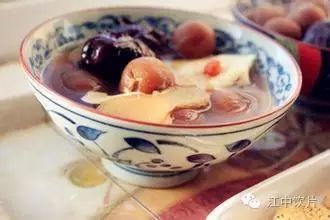
 Dietary Formulas with Astragalus 1. Astragalus Jian Zhong Decoction: Take 15 g of Astragalus, 10 jujubes, 15 g of Bai Shao (White Peony), 10 g each of Gui Zhi (Cinnamon Twig), Sheng Jiang (Fresh Ginger), and Gan Cao (Licorice), and 50 g of maltose. Decoct with water to extract the juice, then add maltose until dissolved and drink. Efficacy: This formula uses Astragalus, jujubes, and licorice to tonify the Spleen and Qi, while cinnamon twig and ginger warm Yang and dispel cold, and white peony alleviates pain. It primarily nourishes the Spleen and Stomach, serving as a main formula for treating cold pain in the stomach due to deficiency. Used for Qi deficiency with internal cold, abdominal pain with tension, preference for warmth, spontaneous sweating, and weak pulse. Modifications: If there is acid reflux, omit maltose and add Wu Zhu Yu (Evodia) to warm the Liver and Stomach to counteract acid; can also add Wa Leng Zi (Corydalis) for additional effect. If there is excessive clear vomiting, add Gan Jiang (Dried Ginger), Chen Pi (Dried Tangerine Peel), Ban Xia (Pinellia), and Fu Ling (Poria) to warm the Stomach and transform phlegm. If Yang deficiency with severe cold and pain, use Da Jian Zhong Decoction to establish the middle Qi, or Li Zhong Wan to warm the middle and dispel cold; when the middle Yang is activated, the cold evil will disperse, and all symptoms will be eliminated. If cold symptoms are not obvious, focusing on Spleen and Stomach deficiency, use Xiang Sha Liu Jun Zi Decoction to tonify Qi, strengthen the Spleen, and harmonize the Stomach. 2. Astragalus and Cinnamon Twig Five Ingredient Decoction: 9 g of Astragalus, 9 g of Cinnamon Twig, 9 g of Bai Shao, 18 g of Sheng Jiang, and 4 jujubes, boiled in 6 liters of water to yield 2 liters, taken warm in 7 portions, three times a day. Efficacy: Tonifies Qi, warms the meridians, and harmonizes blood to relieve obstruction. 3. Angelica and Astragalus Black Chicken Soup: 250 g of black chicken meat, 15 g of Dang Gui (Angelica), and 20 g of Astragalus. Clean the black chicken meat, cut into pieces, wash the Angelica and Astragalus, and place them all in a clay pot with an appropriate amount of water, simmer until cooked. Season and consume. Efficacy: Nourishes both Qi and blood, strengthens the kidneys, and regulates essence. Suitable for menstrual disorders with Qi and blood deficiency, symptoms include irregular menstruation, scanty light-colored flow, fatigue, shortness of breath, vivid dreams, insomnia, dizziness, lower back pain, and pale complexion.
Dietary Formulas with Astragalus 1. Astragalus Jian Zhong Decoction: Take 15 g of Astragalus, 10 jujubes, 15 g of Bai Shao (White Peony), 10 g each of Gui Zhi (Cinnamon Twig), Sheng Jiang (Fresh Ginger), and Gan Cao (Licorice), and 50 g of maltose. Decoct with water to extract the juice, then add maltose until dissolved and drink. Efficacy: This formula uses Astragalus, jujubes, and licorice to tonify the Spleen and Qi, while cinnamon twig and ginger warm Yang and dispel cold, and white peony alleviates pain. It primarily nourishes the Spleen and Stomach, serving as a main formula for treating cold pain in the stomach due to deficiency. Used for Qi deficiency with internal cold, abdominal pain with tension, preference for warmth, spontaneous sweating, and weak pulse. Modifications: If there is acid reflux, omit maltose and add Wu Zhu Yu (Evodia) to warm the Liver and Stomach to counteract acid; can also add Wa Leng Zi (Corydalis) for additional effect. If there is excessive clear vomiting, add Gan Jiang (Dried Ginger), Chen Pi (Dried Tangerine Peel), Ban Xia (Pinellia), and Fu Ling (Poria) to warm the Stomach and transform phlegm. If Yang deficiency with severe cold and pain, use Da Jian Zhong Decoction to establish the middle Qi, or Li Zhong Wan to warm the middle and dispel cold; when the middle Yang is activated, the cold evil will disperse, and all symptoms will be eliminated. If cold symptoms are not obvious, focusing on Spleen and Stomach deficiency, use Xiang Sha Liu Jun Zi Decoction to tonify Qi, strengthen the Spleen, and harmonize the Stomach. 2. Astragalus and Cinnamon Twig Five Ingredient Decoction: 9 g of Astragalus, 9 g of Cinnamon Twig, 9 g of Bai Shao, 18 g of Sheng Jiang, and 4 jujubes, boiled in 6 liters of water to yield 2 liters, taken warm in 7 portions, three times a day. Efficacy: Tonifies Qi, warms the meridians, and harmonizes blood to relieve obstruction. 3. Angelica and Astragalus Black Chicken Soup: 250 g of black chicken meat, 15 g of Dang Gui (Angelica), and 20 g of Astragalus. Clean the black chicken meat, cut into pieces, wash the Angelica and Astragalus, and place them all in a clay pot with an appropriate amount of water, simmer until cooked. Season and consume. Efficacy: Nourishes both Qi and blood, strengthens the kidneys, and regulates essence. Suitable for menstrual disorders with Qi and blood deficiency, symptoms include irregular menstruation, scanty light-colored flow, fatigue, shortness of breath, vivid dreams, insomnia, dizziness, lower back pain, and pale complexion. 

